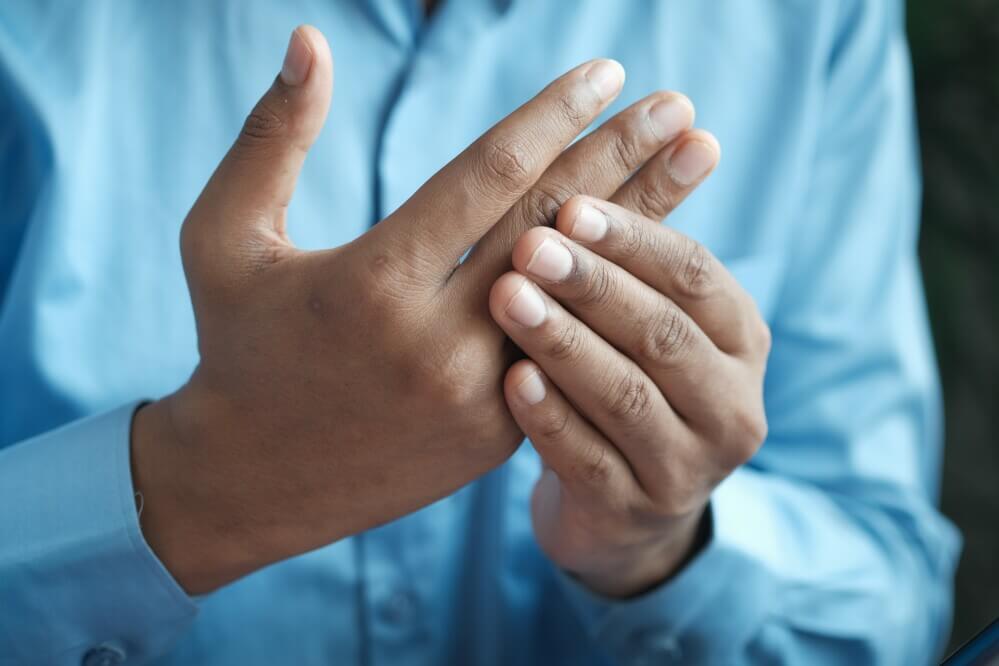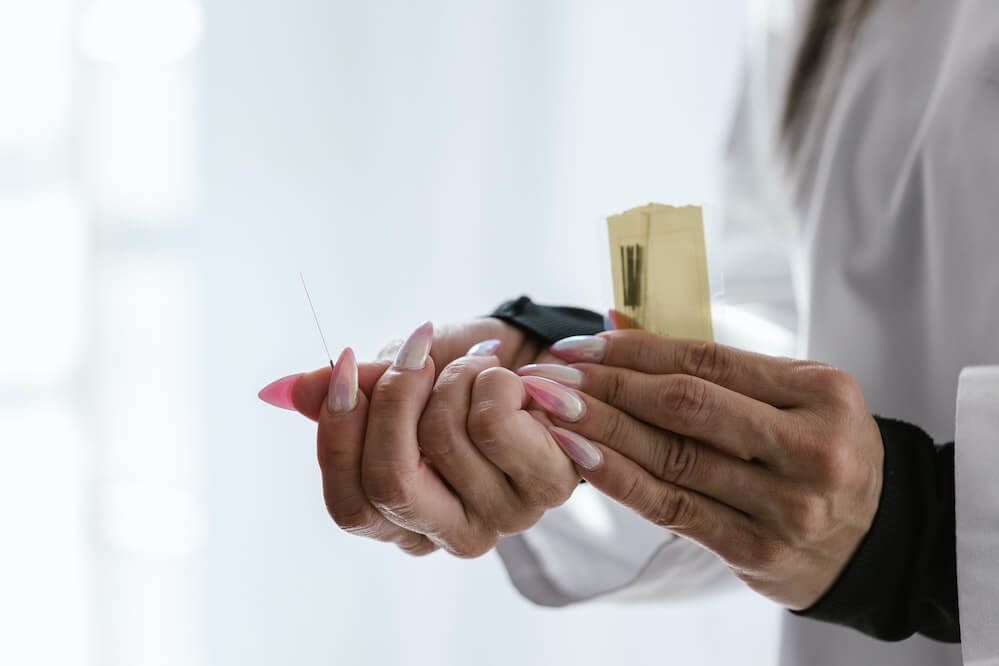Dealing with pain and discomfort from tennis elbow can be a frustrating experience interfering with your daily activities. The traditional approach to treating tennis elbow includes rest, medication, and physical therapy. However, an alternative method is garnering attention for its potential to provide an analgesic effect for managing tennis elbow pain. That is acupuncture, an ancient practice rooted in Traditional Chinese Medicine promoting physical and emotional well-being.
Follow along as we explore the efficacy of acupuncture for tennis elbow and how it can promote wellness for those grappling with this condition.
What Is Tennis Elbow?

Tennis elbow is an injury resulting from muscle strain and overuse. It is caused by repetitive arm movements that can fatigue the forearm muscles and sometimes lead to tiny tears in the tendons. As the name implies, it can be caused by repeated motions when playing tennis, but not exclusively; repeated arm motions when painting, driving screws, cutting up cooking ingredients, using plumbing tools, and using a computer mouse can also lead to tennis elbow.
Tennis elbow symptoms come slowly, with the pain getting worse over time. Some of the symptoms include:
— Stiffness or pain when extending the arm
— Weakened grip
— Swollen elbow joint
— Burning or pain on the outer elbow
— Pain when twisting or bending the arm
Factors that may increase the risk of developing tennis elbow are:
— Occupation: People with jobs involving repetitive motions of the wrist and arm, like plumbers, painters, butchers, cooks, carpenters, etc., are more likely to develop tennis elbow.
— Certain sports: Engaging in sports that use a racket, like tennis, racquetball, badminton, squash, etc., can increase your risk of tennis elbow.
— Age: Although tennis elbow can affect people of all ages, most commonly, it affects adults between the ages of 30 to 50.
Can Acupuncture Help Tennis Elbow?

The research shows that acupuncture can be effective in conjunction with or as an alternative to other therapies for tennis elbow. In fact, the analgesic effect of acupuncture for managing chronic tennis elbow pain was documented way back in a 1994 study. And according to a 2020 systematic review of randomized controlled trials about the effectiveness of acupuncture for tennis elbow, acupuncture might be more effective than drugs and blocking therapy in decreasing the VAS score (Visual Analog Scale) and improving the clinical efficacy rate.
Furthermore, a 2002 study showed that electroacupuncture is more effective than manual acupuncture for treating patients with tennis elbow, confirming that different acupuncture techniques can be superior to others. However, combining acupuncture with other techniques like moxibustion can yield better results in decreasing tennis elbow-related pain.
How to Use Acupuncture for Tennis Elbow?
Acupuncture is a long-established Traditional Chinese Medicine (TCM) practice involving skin penetration with thin, metallic needles at specific points in the body to receive the desired effects. TCM is centered around the belief that “Qi” or vital energy, flows throughout the body in channels or meridians, and any imbalance or stagnation in flow can cause physical and mental issues. Based on TCM, tennis elbow is caused by liver Qi stagnation and internal deficiency and stagnation of Qi and blood.
The way acupuncture for tennis elbow works is by stimulating specific acupuncture points to restore the natural flow of Qi. From the Western medicine perspective, acupuncture utilizes needles to activate nerve endings to evoke a response from the brain and spinal cord to release pain-reducing hormones such as endorphins.
Acupuncture techniques used to treat tennis elbow include:
— Needle retention: The needles are inserted and left for 15 to 30 minutes, depending on weakness severity or muscle tightness.
— Dry needling: This technique helps release muscle knots that are causing pain, increase blood flow, and decrease muscle tightness.
— Electroacupuncture: During the session, the acupuncture needles are attached to a device that delivers electrical impulses to decrease muscle tightness and relax overactive muscles.
Acupuncture Points for Tennis Elbow
The primary goal of an acupuncture session is to activate specific acupuncture points in the body to stimulate the body’s natural healing process. While there are more than 300 acupoints in the body, to treat tennis elbow, the practitioner will activate the following:
— Shou San Li or LI 10: Found on the radial side of the arm on the line connecting LI5 and LI11, this acupoint can help ease wrist, elbow, and shoulder pain.
— Zhou Liao or LI 12: With the elbow flexed, this point is positioned in the depression one cun proximal and lateral to LI11 on the medial border of the humerus. It’s beneficial for alleviating pain and contracture of the elbow and arm.
— Quepen or ST 12: Located at the midpoint of the supraclavicular fossa, four cun lateral to the anterior midline, this acupoint can alleviate tennis elbow symptoms.
— Chi Ze or LU 5: Situated at the elbow crease, on the radial side of the tendon of the biceps brachii muscle, this acupoint can help treat tennis elbow and tendonitis.
Herbs for Tennis Elbow
Herbal therapy in Traditional Chinese Medicine is based on the belief that combining various herbal components can create a healing effect to restore balance in the body. Some of the most common herb formulations for treating tennis elbow are:
— Fang Feng Tang or Saposhnikovia Decoction
— Wang Qiu Zhou Tang or Relieve Tennis Elbow Decoction
— Huang Qi Gui Zhi Wu Wu Tang or Five Ingredients Decoction with Astragalus and Cinnamon
— Juan Bi Tang, also known as Notopterygium and Turmeric Combination
Tips to Prevent and Recover From Tennis Injuries

When playing tennis, although acute injuries like a rolled ankle or a pinch in the shoulder are common and result from not warming up correctly and not removing stray balls from the court, chronic injuries like tennis elbow, tendonitis in the knee, and stress fractures in the back can result from the buildup of repetitive movements during play. However, don’t be dismayed; there are many ways to protect your health and enjoy playing tennis.
Here are some tips on preventing acute and chronic injuries from occurring on the tennis court:
— Warm-up exercises like jogging, side steps, forward/back runs, and gentle stretches are essential to prepare your body for a tennis session.
— Muscle strengthening; single-leg squats, single-leg calf raises, shoulder presses, lateral lunges, and lateral raises help you build stamina.
— Use the right equipment; rackets too light or too heavy can strain muscles in the hand, arm, elbow, and shoulder.
— Manage load on the body by managing the length or the frequency of tennis sessions to avoid tennis-related injuries.
— Improve your technique and avoid using an extreme grip or playing a physical style of tennis with a lot of running and sudden movement.
Unfortunately, injuries can still occur, so here are some tips on recovering from injuries:
— Follow the RICE method (Rest, Ice, Compression, Elevation) as a self-care technique to reduce swelling, ease pain, and speed up recovery.
— Seek professional medical advice for persistent pain or severe injuries.
— Follow the rehabilitation plan prescribed by a physical therapist.
Bottom Line
Tennis elbow is a common injury among tennis players but can also affect non-players. Acupuncture for tennis elbow presents a promising complement to managing tennis elbow-related pain and offers a non-invasive treatment option for those seeking natural alternatives to alleviate symptoms. By using different techniques, such as needle retention, dry needling, and electroacupuncture, and activating specific points in the body, an acupuncture practitioner aims to stimulate the body’s healing process and restore the natural flow of the body’s vital energy, referred to as Qi, to treat the injury.
If interested, check out our vibrant Holistic Wellness Center based in Columbus, OH, to experience the rewards of holistic wellness in your daily life.